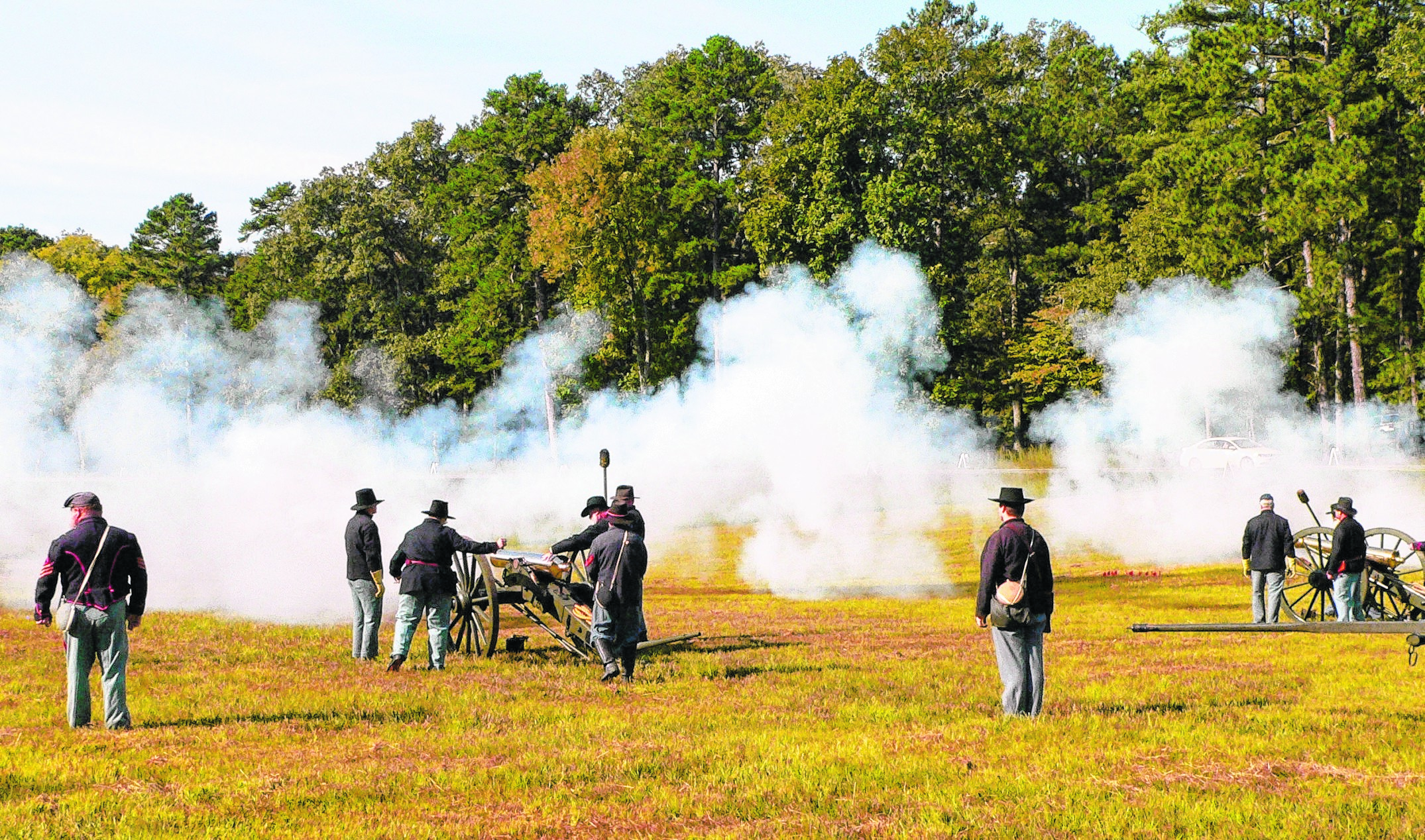Today, 149 years ago, fighting began in what became known as the Battle of Chickamauga.
The commemoration in 1889 by roughly 10,000 veterans, both Confederate and Union, of that bloody battle directly led to the formation of the nation's military battlefield parks.
Today and tomorrow, Sept. 19 and 20, rangers with Chickamauga & Chattanooga National Military Park, the oldest and largest such park, are conducting special programs to recount and explain what occurred on the battlefield and how it shaped the course of history.
During a two-hour car and walking tour Sept. 19, Ranger Anton Heinlein will tell the tale of one veteran of the battle, noted author Ambrose Bierce.
Bierce fought four years in the Civil War. The carnage at Chickamauga, seared in his memory, forever haunted him: "When I ask myself what has happened to Ambrose Bierce, the youth who fought at Chickamauga, I am bound to answer that he is dead."
His idealism, destroyed by the war, was replaced by cynicism, darkness and irony in his writings. Out of these swirling emotions came perhaps his most compelling story, an enthralling five-page classic called simply, "Chickamauga," that many have referred to as America's finest short story.
"I will tell how his experiences shaped his writing in later years," Heinlein said. "During this program we will retrace some of the areas he would have been during the battle."
Ranger Jim Ogden, the park's historian, will lead a 90-minute walking tour on the ground where some of the most significant action occurred the night of Sept. 19, in a program titled: "The New Union Line at Kelly Field."
On that night in 1863, Union troops in George Thomas' sector pulled back to a low rise of ground just east of Kelly Field.
"We'll take about repositioning of Union troops during the hours of darkness to form the Union line that is so recognizable to those familiar with the next day's battle," Ogden said. "This will explain how what occurred around Kelly Field developed into the climactic fighting on Sept. 20."
Sept. 20 there will be three programs related to the fighting that took place 149 years ago.
Heinlein will conduct a one-hour program called "They Can Kill Us, But Whip Us Never!" that tells how Col. Charles Harker's brigade fought at North Dyer Field and Snodgrass farm.
As Confederate forces advanced through the Dyer field following the breakthrough at Brotherton farm, Union forces commanded by Harker positioned themselves at the north end of the field and began firing into the swarming Confederates.
"Harker is one of the unheralded heroes of the battle and was possibly one of the best - and youngest - brigade commanders in the Army of the Cumberland," Heinlein said. "We will discuss how Harker's brigade and the maneuvers they conducted helped save the Union army that day."
Heinlein said the program about Harker's brigade will segue into a second program: "General George H. Thomas and the Union Defenses of Snodgrass Hill and Horseshoe Ridge." This 90-minute walking tour will discuss the complex Union defenses developed and implemented on the afternoon of Sept. 20, 1863.
"Snodgrass Hill and the Horseshoe Ridge lines were critical points of the battle," Heinlein said. "We will be at those positions on the actual days the fighting occurred."
Thursday evening, Ogden will lead a tour detailing what transpired as the sun began setting after two days of fierce fighting that resulted in the last major Confederate victory of the war.
"I will summarize what happened during the day's fighting and deal with the withdrawal of Union troops," he said.
Ogden said Thomas' stand at Snodgrass Hill has become legend, and the commander earned the nickname "The Rock of Chickamauga," but a regiment earned that same name for standing their ground around Kelly Field.
Even after Longstreet's breakthrough and while the "Rock of Chickamauga" stood on Snodgrass Hill, the contending forces arrayed around and opposite Kelly Field, the Union left, continued to battle into late afternoon. As sunset approached, though, the blue brigades on this line received orders to pull out. With Confederates to their front, on their flanks and even to their rear, doing so would be tight. And the Southerners launched an attack that one of their colonels would say gave 'a complete victory to our arms.'"
Organized in 1861, the 19th U.S. Infantry fought at the siege of Corinth and the battles of Shiloh, Stones River and Chickamauga.
Army archives show that at the end of the second day of fighting at Chickamauga, the unit which had had 510 men was reduced to "four officers and 51 men for duty and the regiment was commanded by a second lieutenant."
The 19th still exists and has "The Rock of Chickamauga" as its official motto.
Heinlein and Ogden say none of the programs require strenuous exertion or cover great distances, but those attending should bring a water bottle, wear sturdy shoes and perhaps carry insect repellant.
"None of the walks are long, but there will be some hiking for history and health," Ogden said.
